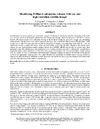Identificador persistente para citar o vincular este elemento:
https://accedacris.ulpgc.es/handle/10553/48665
| Campo DC | Valor | idioma |
|---|---|---|
| dc.contributor.author | Eugenio, F. | en_US |
| dc.contributor.author | Marcello, J. | en_US |
| dc.contributor.author | Martin, J. | en_US |
| dc.date.accessioned | 2018-11-23T23:53:18Z | - |
| dc.date.available | 2018-11-23T23:53:18Z | - |
| dc.date.issued | 2012 | en_US |
| dc.identifier.isbn | 9780819492784 | en_US |
| dc.identifier.issn | 0277-786X | en_US |
| dc.identifier.uri | https://accedacris.ulpgc.es/handle/10553/48665 | - |
| dc.description.abstract | Satellite remote sensing is providing a systematic, synoptic framework for advancing scientific knowledge of the Earth as a complex system of geophysical phenomena that, directly and through interacting processes, often lead to natural hazards. The recent eruption of a submarine volcano at the El Hierro Island has provided a unique and outstanding source of tracer that may allow us to study a variety of structures. The island off the Atlantic coast of North Africa—built mostly from a shield volcano—has been rocked by thousands of tremors and earthquakes since July 2011, and an underwater volcanic eruption 300 meters below sea level started on October 10, 2011. Thanks to this natural tracer release, low and high-resolution satellite images obtained from MODIS, MERIS and WorldView sensors have been processed to provide information on the concentration of a number of marine parameters: chlorophyll, phytoplankton, suspended matter, yellow substance, CDOM, particulate organic and inorganic, etc. This oceanographic remote sensing data has played, as well, a fundamental role during field campaigns guiding the Spanish government oceanographic vessel to the appropriate sampling areas. This paper illustrates the capabilities of satellite remote sensing systems to improve the understanding of submarine volcanic processes and hazards by providing more frequent observations and scientific information at a wide variety of wavelengths. | en_US |
| dc.language | eng | en_US |
| dc.relation.ispartof | Proceedings of SPIE - The International Society for Optical Engineering | en_US |
| dc.source | Proceedings of SPIE - The International Society for Optical Engineering[ISSN 0277-786X],v. 8538 (853816) | en_US |
| dc.subject | 250616 Teledetección (Geología) | en_US |
| dc.subject.other | Remote sensing | en_US |
| dc.subject.other | Satellites | en_US |
| dc.subject.other | MODIS | en_US |
| dc.subject.other | Electroluminescence | en_US |
| dc.subject.other | Image processing | en_US |
| dc.subject.other | Satellite imaging | en_US |
| dc.subject.other | Data modeling | en_US |
| dc.title | Monitoring El Hierro submarine volcano with low and high resolution satellite images | en_US |
| dc.type | info:eu-repo/semantics/conferenceObject | en_US |
| dc.type | ConferenceObject | en_US |
| dc.identifier.doi | 10.1117/12.974519 | en_US |
| dc.identifier.scopus | 84875668163 | - |
| dc.contributor.authorscopusid | 6603605357 | - |
| dc.contributor.authorscopusid | 6602158797 | - |
| dc.contributor.authorscopusid | 57199282278 | - |
| dc.identifier.issue | 853816 | - |
| dc.relation.volume | 8538 | en_US |
| dc.investigacion | Ingeniería y Arquitectura | en_US |
| dc.type2 | Actas de congresos | en_US |
| dc.utils.revision | Sí | en_US |
| dc.identifier.ulpgc | Sí | es |
| item.fulltext | Con texto completo | - |
| item.grantfulltext | open | - |
| crisitem.author.dept | GIR IOCAG: Procesado de Imágenes y Teledetección | - |
| crisitem.author.dept | IU de Oceanografía y Cambio Global | - |
| crisitem.author.dept | Departamento de Señales y Comunicaciones | - |
| crisitem.author.dept | GIR IOCAG: Procesado de Imágenes y Teledetección | - |
| crisitem.author.dept | IU de Oceanografía y Cambio Global | - |
| crisitem.author.dept | Departamento de Señales y Comunicaciones | - |
| crisitem.author.orcid | 0000-0002-0010-4024 | - |
| crisitem.author.orcid | 0000-0002-9646-1017 | - |
| crisitem.author.parentorg | IU de Oceanografía y Cambio Global | - |
| crisitem.author.parentorg | IU de Oceanografía y Cambio Global | - |
| crisitem.author.fullName | Eugenio González, Francisco | - |
| crisitem.author.fullName | Marcello Ruiz, Francisco Javier | - |
| Colección: | Actas de congresos | |
Citas SCOPUSTM
2
actualizado el 08-jun-2025
Citas de WEB OF SCIENCETM
Citations
1
actualizado el 08-jun-2025
Visitas
46
actualizado el 23-sep-2023
Descargas
115
actualizado el 23-sep-2023
Google ScholarTM
Verifica
Altmetric
Comparte
Exporta metadatos
Los elementos en ULPGC accedaCRIS están protegidos por derechos de autor con todos los derechos reservados, a menos que se indique lo contrario.
